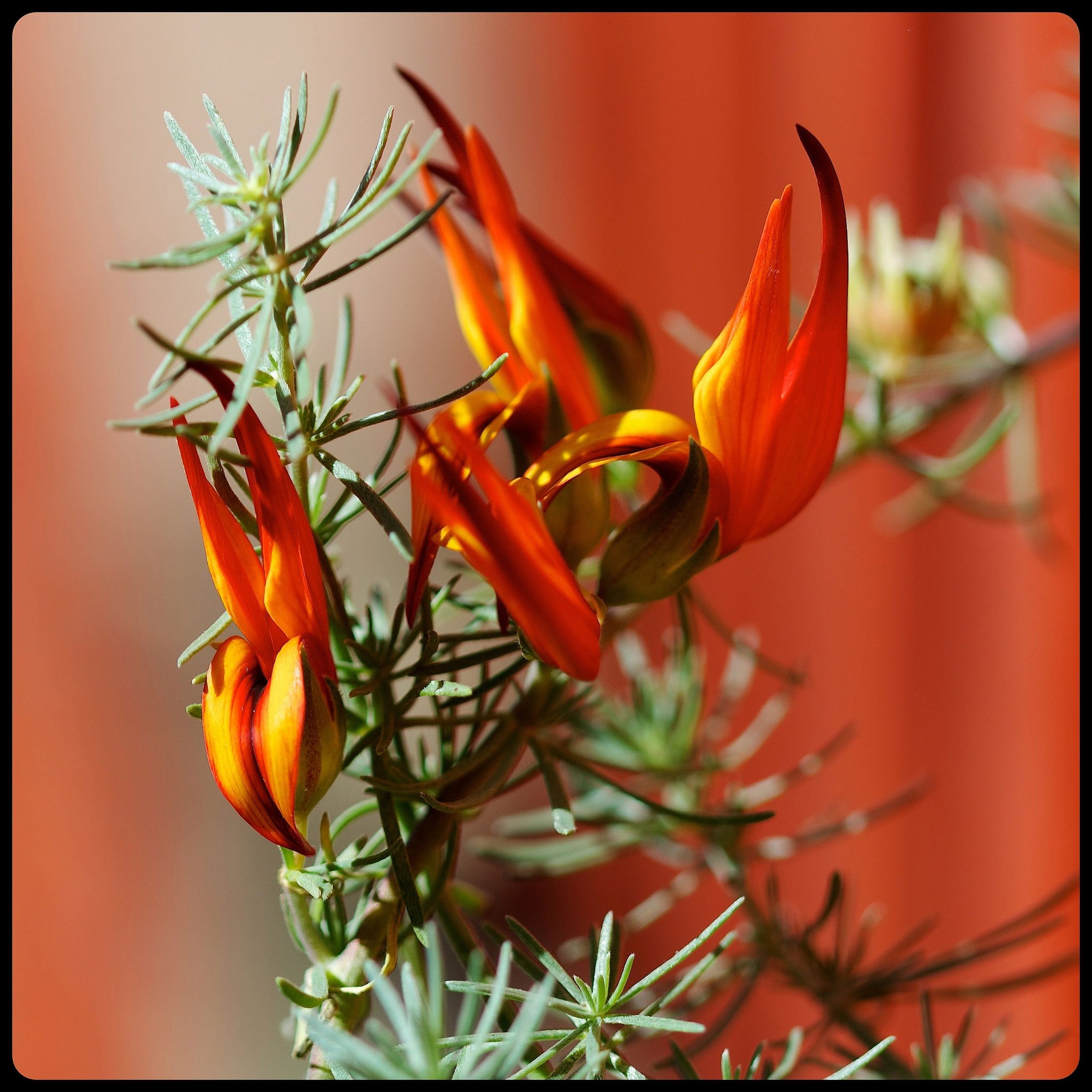Care Of Lotus Vine Flower: Tips For Growing A Lotus Vine


Gardeners who don't know about the lotus vine flower (Lotus berthelotii) are in for a pleasant surprise. Lotus vine plant's bright sunset hues and amazing bloom form perform standout roles in the summer garden.
What is a Lotus Vine?
Also known as parrot's beak, this lovely little plant is an excellent summer container filler and adaptive as a trailing or border plant. It may be used as a summer annual in the warmer regions of the United States. Summer containers are a wonderful way to capture the season and brighten patios, decks, and lanais. Some of the standby plants (such as petunias, violas, zinnia, and snapdragons) have their own appeal and combine with foliage plants and trailing specimens for absolutely beautiful displays. Gardeners with moxie like to tuck in a unique and surprising plant for a stunning bombshell in the midst of more standard summertime beauty. This is what the lotus vine plant was created for-- to shock and amaze and add that little something special to any container garden. Imagine shocking oranges and brilliant red hues, edged by golden and green accents. Picture 1 inch (2.5 cm.) long, tapered petals with a prominent beak, surrounded by grayish green, slightly fuzzy foliage. This is the lotus vine. What is the lotus vine? It is a tender tropical plant from the Canary and Cape Verde Islands and Tenerife. It is only hardy in USDA zones 10 to 12 but makes an excellent summer container annual. The plant tends to trail, and individual tendrils may get up to a foot (31 cm.) or more long. The flowers arrive in the cooler seasons of spring and early summer and most plants go dormant when temperatures begin to soar. Plants grown outside in lower USDA zones will succumb when temperatures drop below 45 degrees F. (7 C.).
Growing a Lotus Vine
You can find this plant in early summer in many garden centers or nurseries. If you have a friend with one, you can also try growing a lotus vine through stem cuttings. Seeds are started indoors eight to ten weeks before the expected date of transplant but will need another year before they can start forming flowers. Save plants in a greenhouse or move them indoors where temperatures do not get below 45 degrees F. (7 C.).
Lotus Vine Care
There are few pest or disease issues with this plant. Spider mites, mealybugs, and aphids are characteristic pests but can usually be handled with an application of horticultural oil. The most important considerations are soil, moisture, and site. The best soil is a well-draining garden or potting soil. Add some sand to a potting soil to increase grittiness and drainage. The plant does not like to be completely dry, but care should also be taken not to water too much. Water deeply and then allow the top surface of the soil to dry out to the touch before applying anew. Do not let the plant's roots stand in a saucer of water. These plants do well in full sun locations.
Gardening tips, videos, info and more delivered right to your inbox!
Sign up for the Gardening Know How newsletter today and receive a free copy of our e-book "How to Grow Delicious Tomatoes".

Bonnie Grant is a professional landscaper with a Certification in Urban Gardening. She has been gardening and writing for 15 years. A former professional chef, she has a passion for edible landscaping.
-
 8 Perfect Flowers To Plant With Tomatoes To Boost Yields & Banish Pests
8 Perfect Flowers To Plant With Tomatoes To Boost Yields & Banish PestsDon’t forget flowers when choosing companion plants for your tomato beds or pots. These pretty, fragrant blooms add beauty but are also highly beneficial.
By Mary Ellen Ellis
-
 Want The Longest Lasting Hydrangea Flowers? Grow These 8 Panicle Hydrangea Varieties
Want The Longest Lasting Hydrangea Flowers? Grow These 8 Panicle Hydrangea VarietiesFor ornamental shrubs that deliver the longest flowering seasons with plush blooms and delicate hues, these panicle hydrangea varieties are essential in your yard
By Tonya Barnett